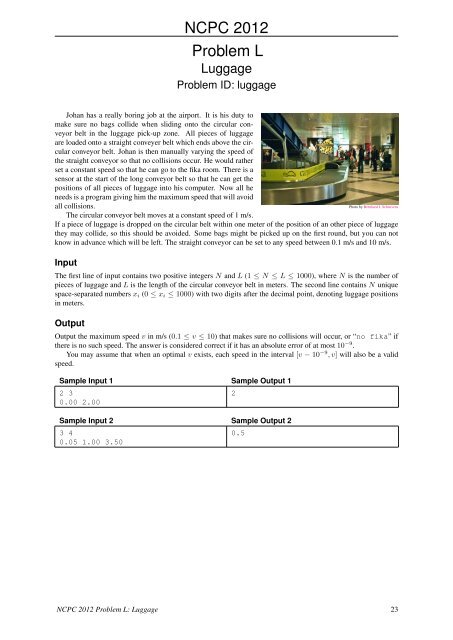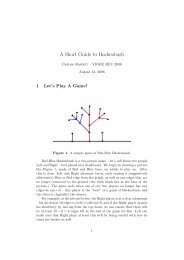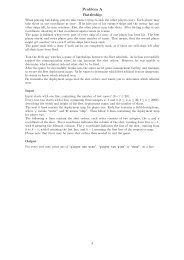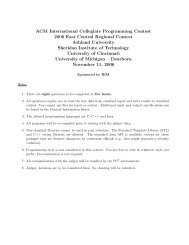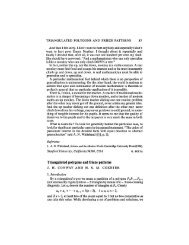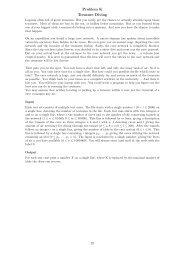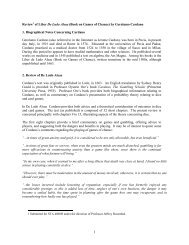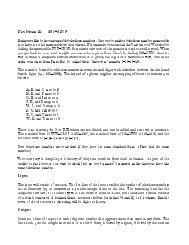Problem A - Nordic Collegiate Programming Contest
Problem A - Nordic Collegiate Programming Contest
Problem A - Nordic Collegiate Programming Contest
Create successful ePaper yourself
Turn your PDF publications into a flip-book with our unique Google optimized e-Paper software.
NCPC 2012<br />
<strong>Problem</strong> L<br />
Luggage<br />
<strong>Problem</strong> ID: luggage<br />
Johan has a really boring job at the airport. It is his duty to<br />
make sure no bags collide when sliding onto the circular conveyor<br />
belt in the luggage pick-up zone. All pieces of luggage<br />
are loaded onto a straight conveyer belt which ends above the circular<br />
conveyor belt. Johan is then manually varying the speed of<br />
the straight conveyor so that no collisions occur. He would rather<br />
set a constant speed so that he can go to the fika room. There is a<br />
sensor at the start of the long conveyor belt so that he can get the<br />
positions of all pieces of luggage into his computer. Now all he<br />
needs is a program giving him the maximum speed that will avoid<br />
all collisions.<br />
Photo by Bernhard J. Scheuvens<br />
The circular conveyor belt moves at a constant speed of 1 m/s.<br />
If a piece of luggage is dropped on the circular belt within one meter of the position of an other piece of luggage<br />
they may collide, so this should be avoided. Some bags might be picked up on the first round, but you can not<br />
know in advance which will be left. The straight conveyor can be set to any speed between 0.1 m/s and 10 m/s.<br />
Input<br />
The first line of input contains two positive integers N and L (1 ≤ N ≤ L ≤ 1000), where N is the number of<br />
pieces of luggage and L is the length of the circular conveyor belt in meters. The second line contains N unique<br />
space-separated numbers x i (0 ≤ x i ≤ 1000) with two digits after the decimal point, denoting luggage positions<br />
in meters.<br />
Output<br />
Output the maximum speed v in m/s (0.1 ≤ v ≤ 10) that makes sure no collisions will occur, or “no fika” if<br />
there is no such speed. The answer is considered correct if it has an absolute error of at most 10 −9 .<br />
You may assume that when an optimal v exists, each speed in the interval [v − 10 −9 , v] will also be a valid<br />
speed.<br />
Sample Input 1 Sample Output 1<br />
2 3<br />
0.00 2.00<br />
Sample Input 2 Sample Output 2<br />
3 4<br />
0.05 1.00 3.50<br />
2<br />
0.5<br />
NCPC 2012 <strong>Problem</strong> L: Luggage 23


